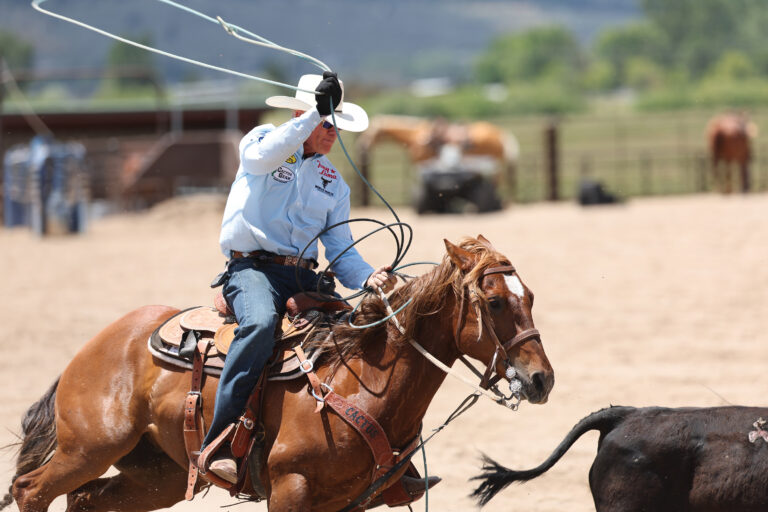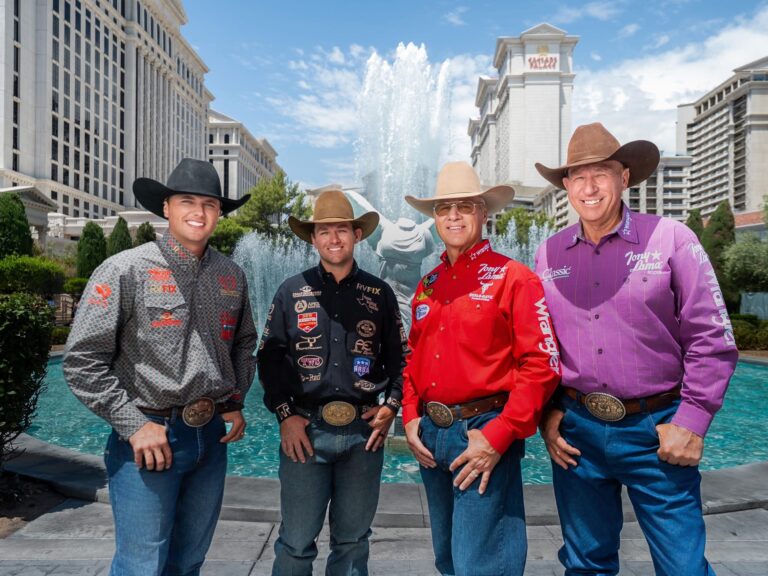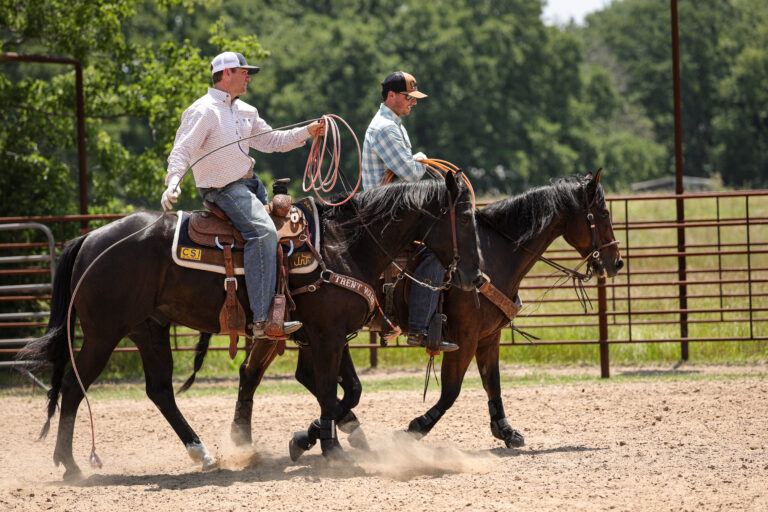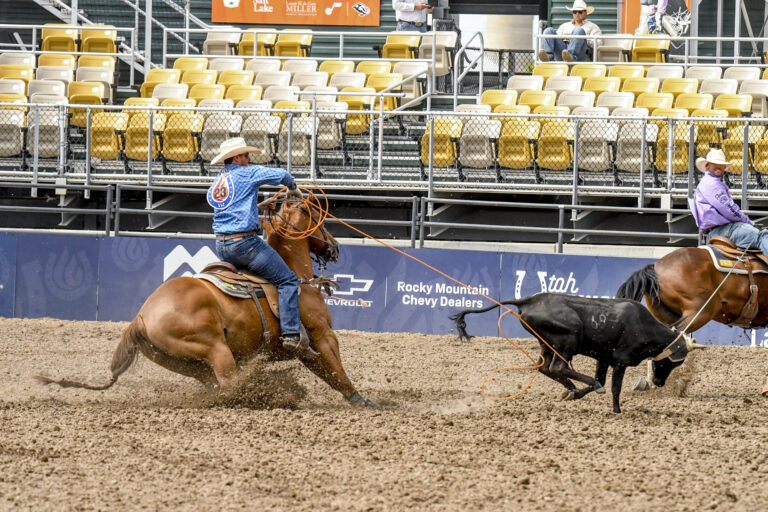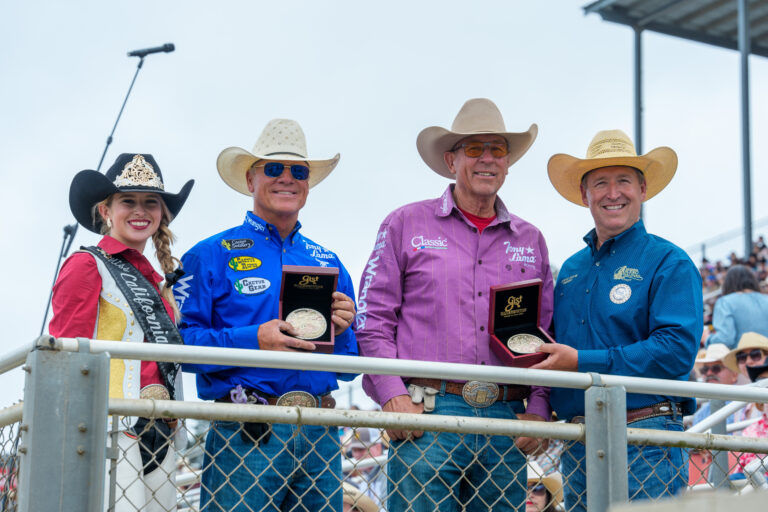Jake (Barnes) and I entered the rodeo in Salinas (California) this summer, and watching the cowboys who are out there roping right now wowed me and took me back. For starters, guys like Wesley Thorp, Junior Nogueira and Levi Lord made some really terrific heel shots in the first round. What amazed me was their intensity, and the physicality of their roping. They’re young and strong, and they went at their shots with everything.
Watching the young ropers of today took me back to my 20s and 30s. The way they go at it now is how I went at it at their age also. Salinas is the perfect place to take note of all this, because we run fast, strong cattle over the 35-foot longest scoreline in rodeo there.
We had a roping school up in Fort Klamath, Oregon the week after Salinas. We had so many students that we ended up having two schools back-to-back. The first school was primarily kids. The second had several talented young people, including a couple who could really rope.
Kids who are 9 or 10 battle the lack of strength. When they get to be 12 to 15 years old, they finally have enough strength to match the strength of live cattle. That’s the thing about heeling—there’s a play to be made when they jump out of there and you make the shot. That timing and positioning come together, and it’s 1-2-Bam.
Heeling gets really physical at the very top level. So I tell those kids when they’re young that they need to go after that shot. They need to learn to make it, because that’s what lies ahead if they want to win.
I sometimes tell young ropers to swing their ropes as hard and fast as they can. Nine times out of 10, that shows them that there’s a level that they haven’t yet tapped into. I tell them that their heroes they look up to—guys like Junior and Jade (Corkill)—go after that shot with intensity. For me, seeing people get better and figure out that they have even more is the fun part of teaching.
This is a lesson and a reminder to me also. As we age, it’s easy to taper off and give up some of that fire and intensity if you don’t work at it. We have to tap into all we’ve got, and give it more than what we’ve been giving it if we want to stay up. Winners have that mentality, and use every tool in their tool bag to make it happen.
It all starts with our practice. When Jake and I first hooked up, Jake had roped with Leo (Camarillo) the year before, and Leo liked to practice going fast. The way he saw it, if you practiced fast, it was easy to then back off and be consistent at the rodeo. So we practiced at the very highest level of our capabilities.
Jake went at steers as fast as he could, and I got around the corner and went at ’em. We practiced right on the edge, and on strong cattle. A lot of people practice on slower type cattle, which are awesome for training and maintaining horses.
But if you’re just talking about competition, the top guys practice at a high tempo. When I lived in Texas all those years, I cruised around and practiced with guys like Clay Tryan, Chad Masters, Luke Brown and David Key. They all went at it, and even practiced their reaching. As a heeler, that makes you keep up and make your shot. So that’s the very best practice for learning to square up and make the shot. And that’s how the guys who make a living roping practice.
They don’t do that on their good horses, but they have practice horses that let them work on their roping. The good horses get saddled and exercised. The practice horses go at it. When Jake and I were making 100 runs a day, I had two or three practice horses. It was their job to take most of the runs, while my good horse might make 4-5-6 runs in a day.
Roping is very competitive at all levels these days. And no matter our number or which roping we’re entering, digging down, doing the work and being focused on giving it all we’ve got is part of what’s going to make us successful.





